Description
Parley P. Pratt’s Mission to Canada
. . . in the fall of 1835. He and his wife now moved to Kirtland, where he stayed that winter and helped with the temple. Heavily in debt, he wondered how he could possibly go on the mission projected for the spring.
April arrived, and he was still undecided. One evening Brother Heber C. Kimball came to his home and said he had a blessing for Parley and his wife. To this point the Pratts had not been able to have children. Elder Kimball blessed Thankful Pratt that she would have a son, and blessed Parley that he would go to Upper Canada and do a great work there that would lead to the opening of missionary work in England.
In Canada, Parley was able to baptize John Taylor, the Fielding family, and many others. He returned to Kirtland in time for the birth of his first son, who was named Parley P. Pratt Jr. A few days earlier Thankful had received a personal vision in which she knew her mission in life was finished. About three hours after the birth of baby Parley she passed away.
Meanwhile, in April 1836, events were transpiring in Kirtland, Ohio, that would forever alter his life. Having retired for the night, Parley P. Pratt was aroused by fellow apostle Heber C. Kimball and requested to receive a blessing he felt inspired to give. Elder Pratt was promised in the blessing that his ailing wife would be healed and, after 10 years of childless marriage, would yet bear him a son. Counseled to take no thought for his temporal needs, he was told to go to Toronto where he would find a people prepared to receive the fullness of the gospel and there organize the Church. He was further informed that from this mission the fullness of the gospel would “spread into England, and cause a great work to be done in that land.”
Impressed by the blessing, Elder Pratt set out for Canada within a few days. He carried little except his faith and a letter of introduction written by a Brother Nickerson and addressed to John Taylor. In spite of the letter, the missionary received a polite but discouraging welcome in Toronto.
Earlier, Taylor and a group of friends had become convinced that the religion they were following did not exhibit the pattern and power of Christ’s ancient church. Consequently, they had been meeting regularly to study the scriptures and investigate the truth claims of various other sects. They had prayed that if Christ’s true church were on the earth, a messenger would reveal it.
Influenced by initial misrepresented reports of “Mormonism,” John Taylor was not immediately prepared to recognize Parley P. Pratt as that messenger. Being unable to obtain a place to preach from other local religious leaders and feeling somewhat discouraged, Elder Pratt was prepared to leave the city. Fortunately, a friend of the Taylors, Mrs. Walton, became aware of the situation and offered to let him preach in her home. After a closer hearing, John Taylor began a more thorough investigation by recording six of Elder Pratt’s sermons and carefully comparing them with the scriptures. Becoming convinced of the truthfulness of the message, he and Leonora were baptized on May 9, 1836.
Shortly thereafter, he received the Melchizedek Priesthood and was called to preside over the Church in Canada. The strength of his conversion and commitment to Christ and the restored gospel would become apparent in ensuing years.
An early example of his commitment came the following March when he visited Kirtland. In the spring of 1837 Kirtland was rife with dissension and disharmony. Sadly, he found that even the missionary who had delivered the gospel to him was temporarily floundering under a cloud of darkness. Undaunted he replied to Parley P. Pratt’s misgivings:
“Now Brother Parley, it is not the man that I am following, but the Lord. The principles you taught me led me to Him, and now I have the same testimony that you then rejoiced in. If the work was true six months ago, it is true today; if Joseph Smith was then a prophet, he is now a prophet.”
The interesting circumstances here alluded to are thus stated by Elder Pratt himself:
“It was now April (1836); I had retired to rest one evening at an early hour, and was pondering my future course, when there came a knock at the door. I arose and opened it, when Elder Heber C. Kimball and others entered my house, and being filled with the spirit of prophecy, they blessed me and my wife, and prophesied as follows: `Brother Parley, thy wife shall be healed from this hour, and shall bear a son, and his name shall be Parley; and he shall be a chosen instrument in the hands of the Lord to inherit the priesthood and to walk in the steps of his father. He shall do a great work in the earth in ministering the word and teaching the children of men. Arise therefore, and go forth in the ministry, nothing doubting. Take no thought for your debts, nor the necessaries of life, for the Lord will supply you with abundant means for all things. Thou shalt go to upper Canada, even to the city of Toronto, the capital, and there thou shalt find a people prepared for the fulness of the gospel, and they shall receive thee, and thou shalt organize the church among them, and it shall spread thence into the regions round about, and many shall be brought to the knowledge of the truth and shall be filled with joy; and from the things growing out of this mission, shall the fulness of the gospel spread into England, and cause a great work to be done in that land. You shall not only have means to deliver you from your present embarrassments, but you shall yet have riches, silver and gold, till you will loathe the counting therof.’ This prophecy was all the more marvelous, because being married near ten years we had never had any children; and for near six years my wife had been consumptive, and had been considered incurable.”
Elder Pratt made immediate preparations for this mission to Canada, and all that was predicted upon his head by his brother apostle, Elder Heber C. Kimball, was fulfilled.
“Thou shalt go to Upper Canada, even to the city of Toronto, the capital,” said Heber C. Kimball, to Parley P. Pratt, in April, 1836, “And there,” continued Heber prophetically, “thou shalt find a people prepared for the gospel, and they shall receive thee, and thou shalt organize the Church among them, and it shall spread thence into the regions round about, and many shall be brought to a knowledge of the truth, and shall be filled with joy; and from the things growing out of this mission shall the fulness of the gospel spread into England and cause a great work to be done in that land.”
This pointed prophecy was strikingly fulfilled. The Fieldings, who were among the people that Parley found in Canada, ready to receive his message, had a brother in England, a minister, to whom they wrote concerning the rise of “Mormonism,” and thus prepared the way for Apostles Heber C. Kimball and Orson Hyde, who, with their associates, including Willard Richards and Joseph Fielding, carried the gospel across the Atlantic. The Revelation James Fielding, the minister referred to, received them kindly (though he afterwards turned against them) and it was from his pulpit in Vauxhall chapel, Preston, Lancashire, July 23, 1837, that these elders preached the first “Mormon” sermons ever heard in Britain.
Heber C. Kimball had prophesied that Brother Pratt should go to Upper Canada, even to the city of Toronto. There he would find people prepared for the fulness of the gospel. He would organize a branch of the Church among them that would spread into the regions round about, and many would be brought to a knowledge of the truth and be filled with joy. Such a pronouncement by Elder Kimball impelled Elder Pratt to leave his sick wife, a partially completed home, and a mountain of debt in Kirtland to undertake the mission to Upper Canada.
At the outset he was uncertain how he should proceed. Penniless, he started off with Moses Nickerson, who bore his expenses as far as Niagara Falls, where their paths separated. Very shortly Elder Pratt met a stranger who gave him ten dollars and a letter of introduction to John Taylor, whom the man knew. When Elder Pratt arrived in Toronto, he sought out the home of John Taylor. Here he found a handsome man, six foot tall, weighing about 180 pounds, who greeted Elder Pratt with a delightful accent that marked him as a native from northern England. The greeting was warm until Elder Pratt let him know that he was on a mission for the Mormon church. John Taylor then turned cool. During his service as a preacher in the Methodist Church he had heard derogatory reports about the new American sect and had closed his mind to it.
John Taylor showed no interest in hearing the visitor’s message, nor in helping him find lodging or a place in which to hold a meeting. Disappointed at this rebuff, Elder Pratt checked into a public house and the next day canvassed the community trying to find accommodations for a public meeting. His efforts seemed fruitless. All doors were closed to him until a Mrs. Walton, a friend of the Taylors, allowed him to use her parlor for the meeting. Thus Elder Pratt began to proselytize among the group of Bible students in Toronto. John Taylor was one of the leaders of this group, most of whom had begun to question the tenets and practices of their church because these did not conform to biblical teachings.
Overcoming his initial reluctance to listen to Elder Pratt, John Taylor began attending the meetings held at Mrs. Walton’s home as well as other homes where the visitor was invited to come and speak. Elder Pratt’s skill and knowledge of the scriptures impressed John Taylor. To facilitate his study, he wrote down eight sermons that Elder Pratt had delivered and carefully compared them to the Bible. He also reviewed evidences of the authenticity of the Book of Mormon and the Doctrine and Covenants. Commenting later on these studies, the investigator said, “I made a regular business of it for three weeks … and followed Brother Parley from place to place.” Finally convinced of the truthfulness of what they had been hearing, both John and Leonora Taylor were baptized into The Church of Jesus Christ of Latter-day Saints on May 9, 1836. At the twilight of his life, John Taylor said of his conversion: “I have never doubted any principle of Mormonism since.” He became a leader of the newly formed branches in the Upper Canada regions.
Sources:
(Heroes of the Restoration. Salt Lake City, Utah: Bookcraft, 1997.)
(LDS Church News, Deseret News. 1988- 1998. Salt Lake City: Deseret News Publishing Company. 4-3-93.)
(See Heber C Kimball Autobiography, chs, xvi, xix, xx.)
( J. Golden Kimball, General Conference Reports 1880, 1897-1970.)
(Elder L. Tom Perry, Heroes of the Restoration. Salt Lake City, Utah: Bookcraft, 1997.)
Copyright Glenn Rawson

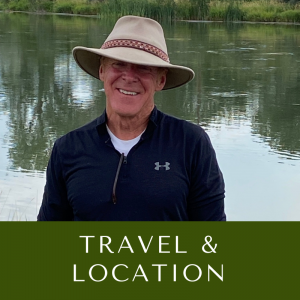
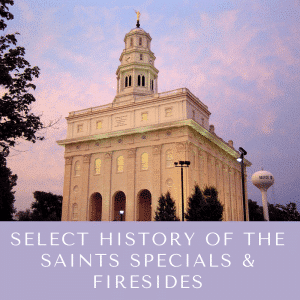


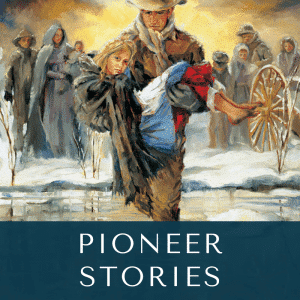

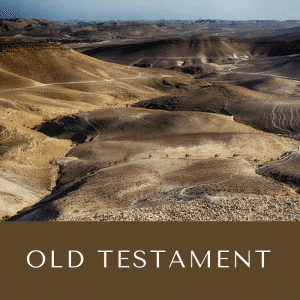


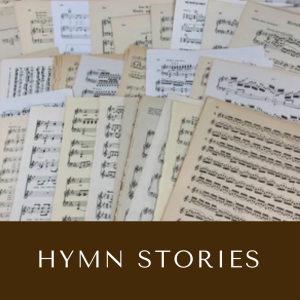



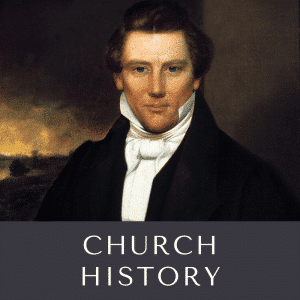

Reviews
There are no reviews yet.